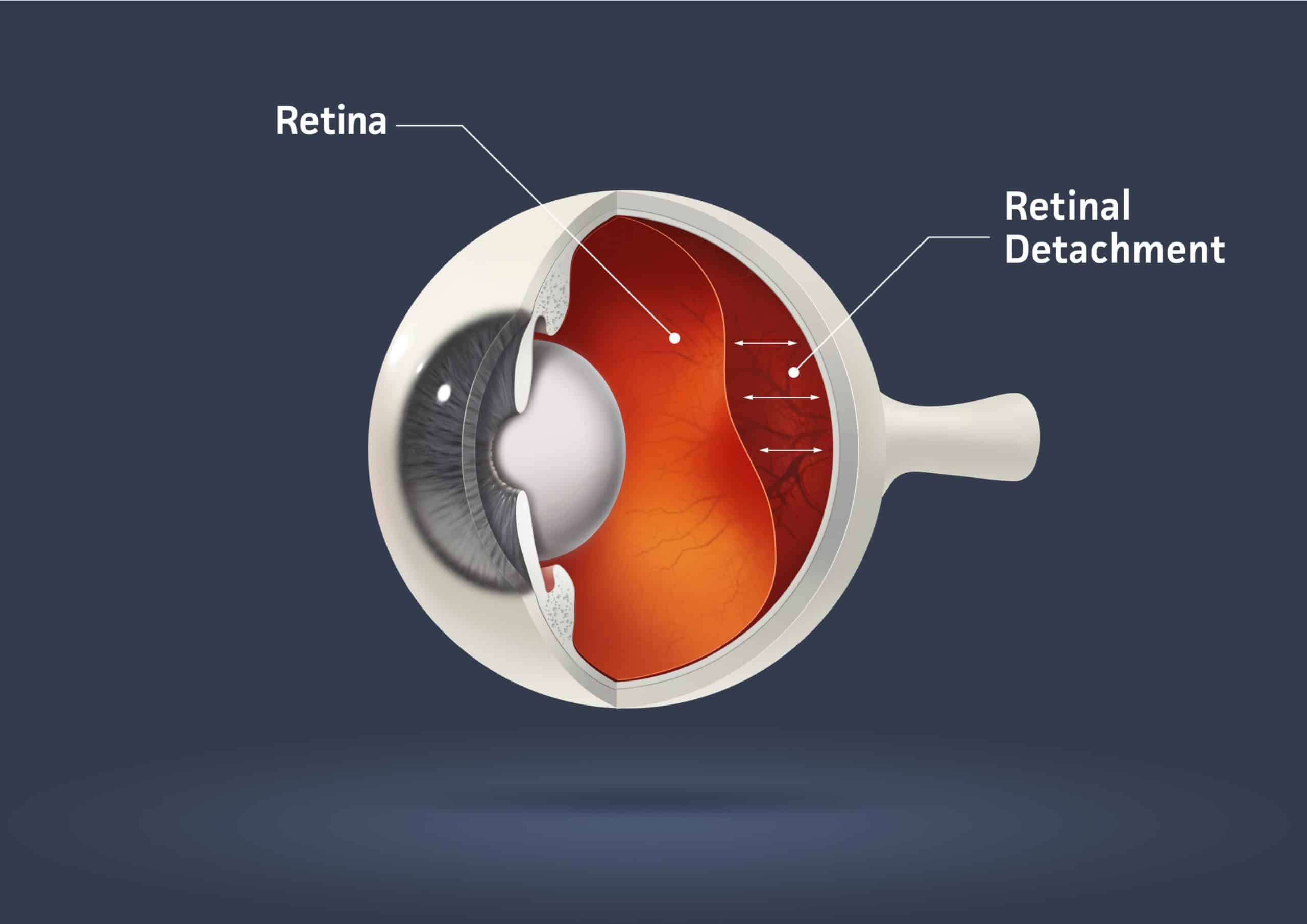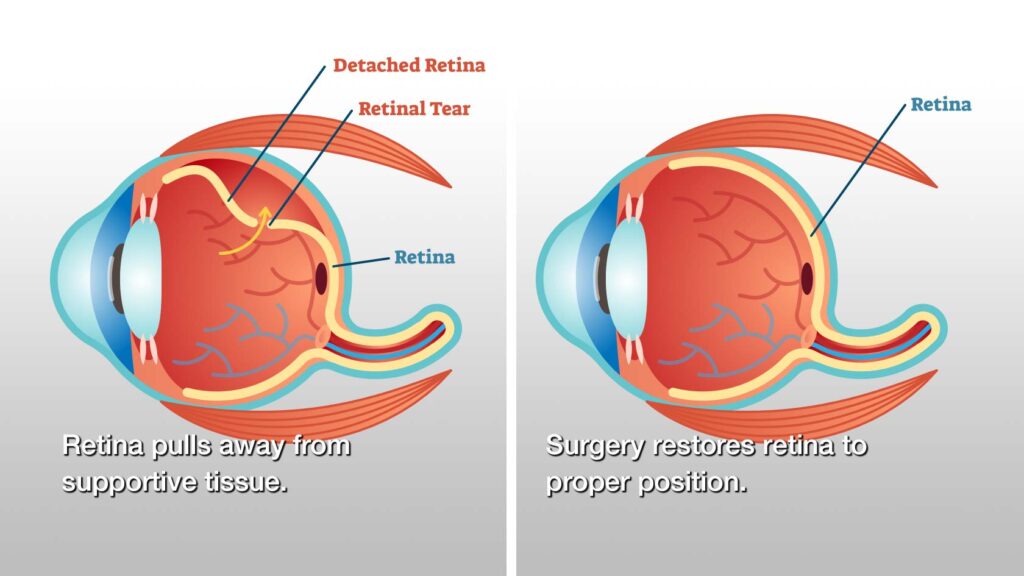
Advancing Clarity: Exploring the Latest in Retinal Treatments
The health of our eyes is crucial for leading a fulfilling life, as it allows us to see and experience the world around us. However, various conditions can affect the delicate structures of the eye, including the retina.
In this article, we will delve into the fascinating world of retinal treatments, exploring the basics of retinal diseases, the evolution of treatment methods, the latest breakthroughs, the future of retinal detachment treatments, and patient considerations. Join us on this journey as we uncover the advancements that are advancing clarity in retinal health.
Understanding the Basics of Retinal Diseases
The retina, a thin layer of tissue located at the back of the eye, plays a crucial role in vision. Acting like a camera, it captures light and sends visual signals to the brain, allowing us to see the world in all its vibrant colors and details. Any damage or disorder affecting the retina can, therefore, have a significant impact on our visual capabilities.
Let’s delve deeper into the fascinating world of the retina and its intricate workings.
The Role of Retina in Vision
The retina consists of several layers, each with a unique role in the visual process. The photoreceptor cells, namely the rods and cones, absorb light and convert it into electrical signals. These signals are then transmitted to the bipolar cells, which further relay them to the ganglion cells. The ganglion cells bundle together to form the optic nerve, which carries the visual information to the brain for interpretation.

Imagine the retina as a team of specialized cells working together to capture and process visual information. The rods, which are more sensitive to dim light, help us see in low-light conditions, such as during nighttime stargazing. On the other hand, the cones, which are concentrated in the central part of the retina called the macula, are responsible for our color vision and sharp central vision.
It’s truly remarkable how these cells work in harmony to create the images we perceive every day.
Common Retinal Disorders
Various retinal disorders exist, each with its own set of symptoms and causes. Some of the most common conditions include age-related macular degeneration (AMD), diabetic retinopathy, retinal detachment, and retinitis pigmentosa. These disorders can lead to vision loss or even blindness if left untreated.
Age-related macular degeneration (AMD) is a progressive condition that affects the macula, the central part of the retina responsible for detailed vision. It often occurs in older adults and can cause a gradual loss of central vision, making it difficult to read, drive, or recognize faces.
Diabetic retinopathy, as the name suggests, is a complication of diabetes that affects the blood vessels in the retina. High blood sugar levels can damage these blood vessels, leading to vision problems. In the early stages, diabetic retinopathy may not cause noticeable symptoms, but as it progresses, it can cause blurred vision, dark spots, and even vision loss.
Retinal detachment is a serious condition where the retina separates from its underlying tissue. This can occur due to trauma, aging, or other underlying eye conditions. If not promptly treated, retinal detachment can result in permanent vision loss.
Retinitis pigmentosa is a genetic disorder that causes the breakdown and loss of cells in the retina. It often leads to night blindness and a gradual loss of peripheral vision. While there is currently no cure for retinitis pigmentosa, there are treatment options available to manage the symptoms and slow down the progression of the disease.
Understanding these common retinal disorders is crucial for early detection and timely intervention. Regular eye exams and maintaining overall eye health are essential in preserving our precious gift of sight.
The Evolution of Retinal Treatments
Over the years, significant advancements have been made in the field of retinal treatment. Early methods of treatment, while limited in their effectiveness, paved the way for the development of modern approaches that have revolutionized retinal therapy.
Retinal diseases have long been a challenge for medical professionals, with limited options available for treatment. However, as our understanding of the intricacies of the retina has grown, so too have our treatment options.
Early Methods of Treatment
In the past, treatment options for retinal diseases were limited. Surgical interventions, such as retinal laser photocoagulation and cryotherapy, aimed to prevent further damage but often resulted in partial vision restoration at best. These procedures were accompanied by considerable risks and complications.
Retinal laser photocoagulation involved using a laser to seal leaking blood vessels in the retina, reducing the risk of further damage. While this procedure was effective in some cases, it often led to scarring and limited visual improvement.
Cryotherapy, on the other hand, used extreme cold to destroy abnormal blood vessels or areas of the retina. While it could be successful in treating certain retinal conditions, it also carried the risk of damaging healthy tissue and causing vision loss.
These early methods of treatment were a stepping stone towards the advancements we see today. They laid the foundation for further research and innovation in the field of retinal therapy.

Modern Advances in Retinal Therapy
Today, thanks to ongoing research and technological advancements, retinal treatments have come a long way. The introduction of intravitreal injections, such as anti-VEGF medications, has revolutionized the management of retinal diseases. These injections target the underlying causes of conditions like AMD and diabetic retinopathy, helping to preserve and restore vision.
Anti-VEGF medications work by blocking the growth of abnormal blood vessels in the retina, reducing inflammation, and preventing further damage. These injections have shown remarkable success in improving visual outcomes for patients with retinal diseases, offering a new level of hope and quality of life.
In addition to medication-based therapies, cutting-edge surgical procedures, such as vitrectomy and retinal implantation, offer hope to individuals with severe retinal disorders. Vitrectomy involves removing the gel-like substance in the center of the eye, allowing for better access to the retina for repair or transplantation. Retinal implantation, on the other hand, involves the use of artificial retinal devices to replace damaged retinal tissues, providing a means for individuals with retinal degeneration to regain some visual function.
These modern advances in retinal therapy have transformed the landscape of treatment options available to patients. With ongoing research and technological advancements, the future holds even more promise for individuals with retinal diseases, as we continue to strive for improved outcomes and better quality of life.
The Latest Breakthroughs in Retinal Treatments
One of the most exciting aspects of retinal treatments is the constant stream of breakthroughs that continue to push the boundaries of what is possible. Innovative surgical procedures and cutting-edge medications are transforming the landscape and providing new options for patients.
Retinal treatments have come a long way in recent years, thanks to the tireless efforts of researchers and medical professionals. These advancements have revolutionized the field, offering hope and improved outcomes for patients suffering from various retinal diseases.
Innovative Surgical Procedures
Researchers and surgeons are continually exploring new techniques to enhance retinal surgery. With the advent of robotic-assisted surgery, precision and accuracy have reached unprecedented levels. This groundbreaking technology allows surgeons to perform intricate procedures with enhanced control and minimal invasiveness.
One such procedure that has benefited from these advancements is membrane peeling. Membrane peeling involves the removal of scar tissue or abnormal membranes from the surface of the retina. With the help of robotic-assisted surgery, surgeons can now perform this delicate procedure with greater efficiency and improved outcomes. Patients can experience faster recovery times and better visual outcomes.
Another area where innovative surgical procedures have made a significant impact is macular hole repair. Macular holes can cause vision loss and distortion, severely impacting a person’s quality of life. However, with the latest advancements in surgical techniques, surgeons can now repair macular holes with greater precision and success rates. This means that patients have a higher chance of regaining their vision and enjoying a better quality of life.
Cutting-edge Medications and Therapies
Pharmaceutical companies are at the forefront of developing medications that target specific molecular processes involved in retinal diseases. These cutting-edge medications offer new hope for patients who previously had limited treatment options.
Gene therapies, in particular, hold immense promise for conditions caused by genetic mutations. By targeting the underlying genetic defects, these therapies aim to correct the malfunctioning genes and restore normal retinal function. While still in the early stages of development, gene therapies have shown remarkable results in clinical trials, offering hope for patients with inherited retinal diseases.
Advancements in stem cell research also offer potential avenues for regenerating damaged retinal tissues. Stem cells have the remarkable ability to differentiate into various cell types, including retinal cells. Scientists are exploring ways to harness this regenerative potential to repair and replace damaged retinal cells, potentially restoring vision in patients with retinal degenerative diseases.
Additionally, researchers are investigating the use of nanotechnology in retinal treatments. Nanoparticles can be engineered to deliver medications directly to the retina, bypassing other tissues and minimizing side effects. This targeted approach holds great promise for improving the efficacy and safety of retinal treatments.
In conclusion, the field of retinal treatments is witnessing a wave of exciting breakthroughs. From innovative surgical procedures that enhance precision and outcomes to cutting-edge medications and therapies that target the underlying causes of retinal diseases, patients now have more options and hope for improved vision. As research continues to push the boundaries of what is possible, the future looks bright for those affected by retinal conditions.

The Future of Retinal Treatments
As we look ahead, numerous exciting developments hold promise for further advancing retinal health. Ongoing research aims to refine existing therapies and explore novel treatment modalities with the goal of providing even better outcomes for patients.
Potential Developments in Retinal Health
Gene editing technologies, such as CRISPR-Cas9, offer the potential to correct genetic mutations associated with retinal diseases. By targeting and repairing specific genes, these technologies could offer personalized and precise treatments for individuals with inherited retinal disorders, bringing about truly transformative effects.
The Impact of Technology on Retinal Treatments
The ever-expanding field of technology is rapidly influencing the landscape of retinal treatments. Artificial intelligence, for example, is being used to analyze retinal scans and predict disease progression. Virtual reality and augmented reality are also aiding in surgical simulations and planning, allowing for safer and more effective procedures.
Patient Considerations in Retinal Treatments
For individuals facing retinal diseases, seeking appropriate treatment is of utmost importance. Understanding the risks and benefits associated with different treatment options can empower patients to make informed decisions regarding their eye health.
Understanding the Risks and Benefits
Each treatment modality carries its own set of risks and benefits. Surgical procedures, for instance, may involve potential complications such as infection or retinal detachment, while medication-based therapies may have side effects. It is essential for patients to engage in open conversations with their healthcare providers to assess the potential outcomes and make choices that align with their individual circumstances and aspirations.
The Importance of Early Detection and Treatment
Early detection and timely intervention are crucial in managing retinal diseases. Regular eye examinations, particularly for individuals at higher risk, can aid in the early identification of any abnormalities. By detecting and treating retinal conditions promptly, the chances of preserving and restoring vision are greatly enhanced.
In conclusion, the field of retinal treatments has come a long way, with advancements in surgical techniques, medications, and the potential for groundbreaking future developments. These advances not only offer hope for individuals with retinal diseases but also highlight the importance of early detection and informed decision-making. As researchers and healthcare providers continue to push the boundaries of what is possible, the future appears promising for advancing clarity in retinal health.
More to read: How ResMed AirSense 10 Stands Out in the CPAP Machine Market